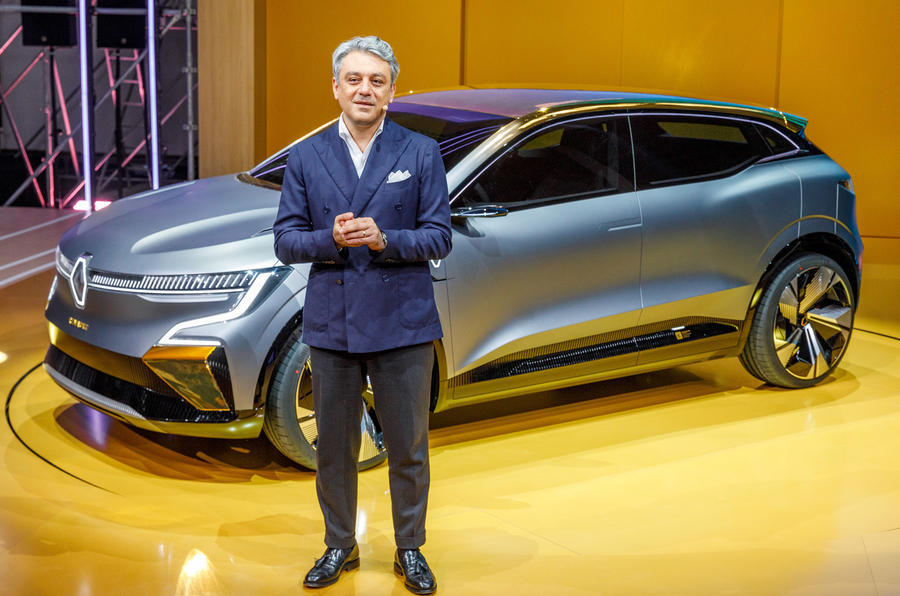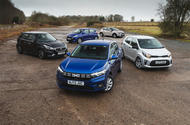Exasperated boss de Meo says EU drive to make cars cleaner and safer has made them heavy and expensive
Renault’s boss has decried automotive regulations in Europe as “objectively favouring premium models” and called on authorities to help redress the balance by promoting the development of affordable cars again.
“Cars are required to be more sophisticated, more fuel-efficient and less costly all at the same time,” a clearly exasperated Luca de Meo wrote in a wide-ranging letter addressed to Europe. “This has already had an effect that is totally counterproductive: passenger cars are now 60% heavier on average.”
In his letter, the Italian strongly advocates a new industrial model that would strengthen the hand of the European automotive industry – and in particular volume brands – in the face of strong competition from China and the US.
His complaint is that Europe’s drive to make cars cleaner and safer has made them heavier and more expensive. “Since the 1990s, this policy has objectively favoured premium models to the detriment of more mainstream models,’ he wrote.
De Meo is expanding on a theme that he has presented before as both Renault’s boss and as the chairman of European automotive industry lobby group the ACEA.
His argument is that by forcing car makers to add more complexity, the EU (and by extension the UK, given that it carries over most EU automotive policies) has had “a negative impact” on the small car segment, with sales down by 40% over 20 years.
This “upmarket drift” is one that was set in motion in Europe as early as 1992, with the introduction of Euro emissions controls, argued academic Tommaso Pardi in a report published in 2022 by European Trade Union Institute.
Pardi’s argument, championed by de Meo, is that the EU’s tech-led solution to reducing pollution – starting with catalytic convertors – favoured premium brands over volume brands, which countered with cheap, lightweight, low-consumption vehicles.
The push to lower CO2 and suppress rising global temperatures actually shifted the centre of gravity towards bigger cars and the likes of BMW, Mercedes-Benz, Audi, Jaguar Land Rover and Volvo, which have been further boosted by softer targets for manufacturers of heavier cars.
While the aims may have been laudable, the effect has been disastrous on affordability in the 21st century, claimed Pardi. “Cars have become substantially more expensive during this period and much less accessible to the average European household,” he wrote.
His figures show that market share of volume brands increased by 37% between 2001 and 2020, while average car prices grew by 50-53%. That rise outpaced inflation of 38% over the same period.

De Meo has previously pushed for more focus to be given to affordable cars
Forced to squeeze premium technologies into compact segments, volume brands such as Renault, Peugeot and Ford came up with a strategy that further added to the weight gain: making SUVs.
“The transformation of these cars into SUVs was the strategic answer of generalist car manufacturers to deal with upmarket drift,” Pardi wrote.
Last year, SUVs accounted for more than 50% of the car market for the first time across Europe.
The average mass of new cars meanwhile increased by 17% to 1481kg in the 20 years to 2021, figures from the International Council on Clean Transportation (ICCT) show.
Since 2020, new car prices have shot up even further as low-tech combustion-engined cars in the smaller categories have proven uneconomical to switch to electrified platforms.
Electrification is increasing the upmarket drift as premium brands embrace of plug-in hybrid and electric cars with ever bigger batteries.
The answer for volume brands has been either to pull out of Europe altogether (General Motors), exit small segments (Ford), consolidate (Peugeot, Citroën, Fiat, Vauxhall etc into Stellantis), head upmarket (Volkswagen) or develop premium brands (PSA with DS, Renault with Alpine).
Renault-owned Dacia is the only true budget brand that has thrived and grown share in the past two decades, but it too has massively increased its prices.
“Dacia was actually the brand that went most upmarket during this period, precisely to comply with the EU regulatory framework,” Pardi wrote.
De Meo’s answer to this is not to exempt small ICE cars from growing regulations but to create a new EV category. “We should take our inspiration from Japan and its small urban vehicles or kei cars,” de Meo wrote. “From the factory to end-of-life, the environmental impact of a small car is 75% lower.”
These European equivalents to kei cars should be given special concessions to further boost demand, de Meo has argued.
Shorter-range EVs have so far proven less popular in the marketplace, despite lower prices. Customers favour longer-range cars to cope with most journeys, leading to them choosing EVs with weighty battery packs.
“Driving around every day in an electric vehicle weighing 2.5 tonnes is clearly an environmental nonsense,” de Meo wrote.
De Meo’s vision of a joined-up strategy includes roping in the leaders of Europe’s 200 biggest cities – a crucial step if smaller EVs are to be rewarded on a local level.
“One approach would be to allow free access only to small electric or hydrogen-powered cars and vans,” he wrote. “If all towns and cities adopt the same measures at the same time, this would automatically lead to a virtuous effect of scale for the industry, which would gain a bigger market.”
Like the Volkswagen Group, Renault is busy trying to develop the small, cheap EVs needed to grow the affordable end of the market again. But it’s a hard slog to bring together the economies of scale, the access to cheaper battery materials and compliance with regulations.
The European kei car format is de Meo’s preferred answer: small EVs sold at half the price of a mid-range model.
“We could rapidly reverse the current trend with an array of inexpensive measures: social leasing, free parking spaces, preferential charging prices, lower interest rates on loans, incentives for young buyers and so on,” he wrote.
As EU parliament elections loom, de Meo is challenging the new intake to reverse the “upmarket drift” and make small cars affordable again.
Source: Autocar
